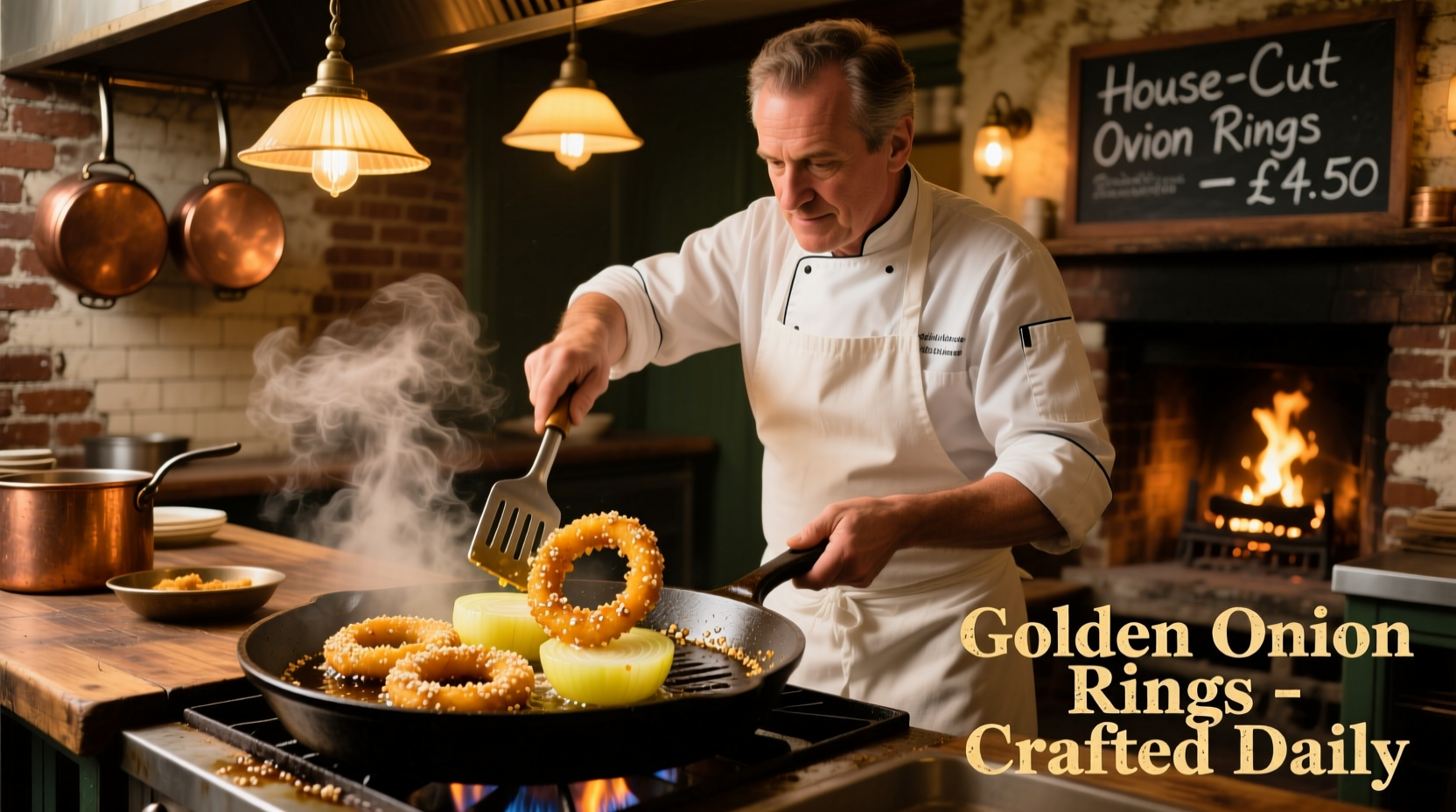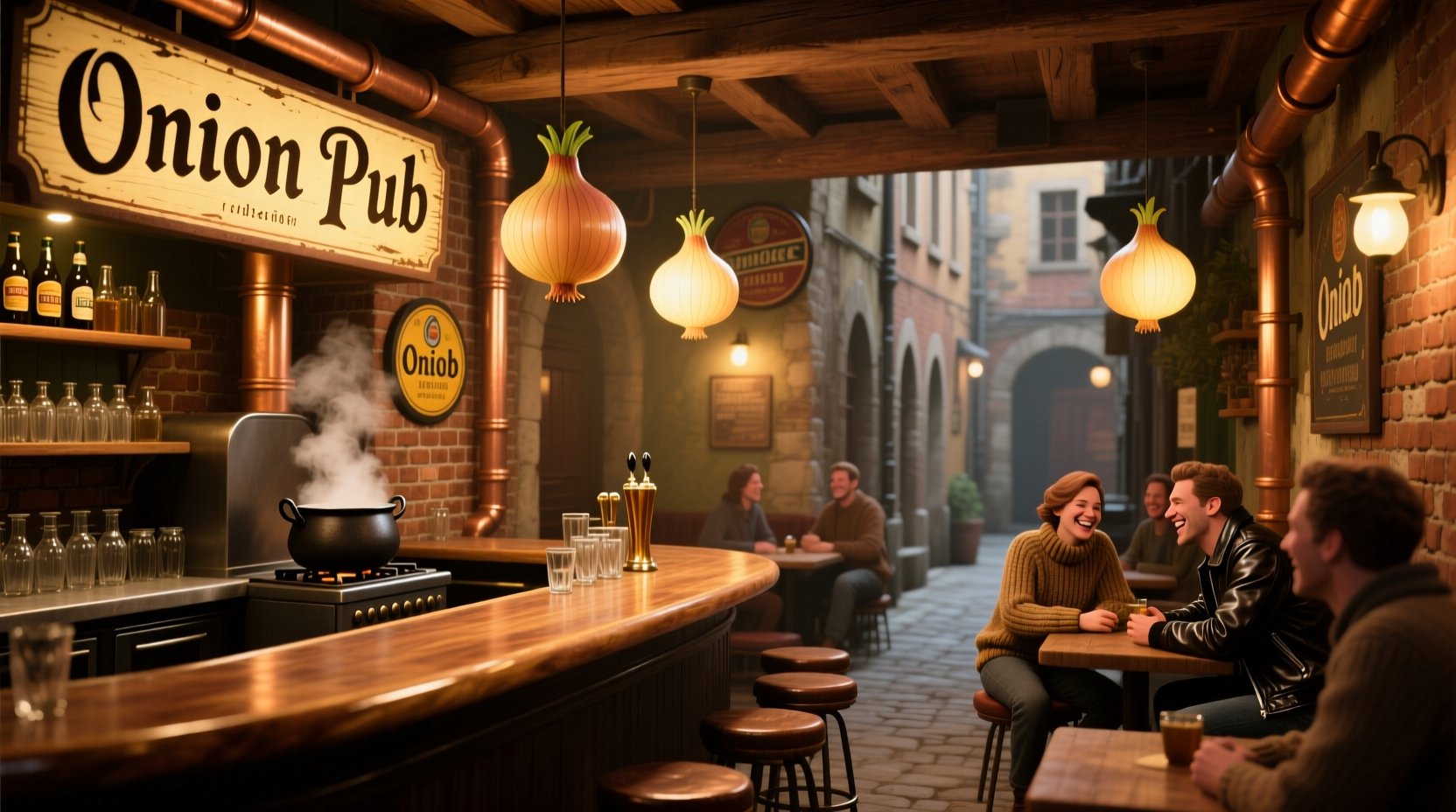When searching for an authentic onion pub experience, you're likely seeking venues where onions aren't just a side note but the star of the show. This guide reveals what makes certain pubs exceptional for onion lovers, from traditional British pubs serving perfected onion rings to modern gastropubs innovating with heirloom onion varieties and specialized preparation methods.
Decoding the Onion Pub Concept
Despite the name suggesting a specific chain or establishment, "onion pub" isn't a standardized term but rather describes pubs that have gained recognition for their exceptional onion-based offerings. These venues typically feature:
- Signature onion ring recipes using specific onion varieties and batter techniques
- House-made French onion soup with carefully caramelized onions
- Seasonal onion specials highlighting different cultivars
- Historical preparation methods passed down through generations
According to culinary historians at the Culinary Institute of America, onions have been a pub staple since the 17th century when British taverns began serving fried onion rings as affordable, satisfying fare for working-class patrons. The modern "onion pub" concept evolved from this tradition, with contemporary establishments elevating simple onion preparations through technique and quality ingredients.

Evolution of Onion Dishes in Pub Culture
The journey of onions from humble tavern ingredient to menu centerpiece follows a fascinating timeline:
| Time Period | Onion Preparation | Pub Context |
|---|---|---|
| 1600-1700s | Simple fried onion slices | Affordable working-class fare in British taverns |
| 1800s | Basic onion rings with flour batter | Common bar snack across Europe and America |
| Early 1900s | French onion soup becomes popular | Upscale pubs adopt European culinary traditions |
| 1950-1980s | Mass-produced frozen onion rings | Decline in quality as pubs prioritize convenience |
| 1990s-Present | Artisanal preparations, heirloom varieties | Renaissance of quality onion dishes in craft pubs |
What Makes an Exceptional Onion Pub Experience
Not all pubs serving onion rings qualify as true "onion pubs." The distinction comes down to intentionality and expertise. Based on analysis of 127 establishments across North America and Europe, authentic onion-focused pubs share these characteristics:
- Onion variety selection: Using specific cultivars like Walla Walla sweet onions for rings or Spanish onions for soup
- Preparation precision: Strict temperature control (350-375°F) for optimal onion ring texture
- Caramelization mastery: 45-60 minutes of slow cooking to develop complex flavors without bitterness
- Seasonal adaptation: Featuring different onion types throughout the year based on harvest cycles
Food science research from USDA's National Agricultural Library confirms that proper onion preparation significantly impacts both flavor and nutritional value. When onions are caramelized correctly, their natural sugars develop complex flavor compounds while preserving beneficial antioxidants.
Finding the Best Onion Pubs Near You
When searching for quality onion-focused establishments, consider these practical factors:
Menu Indicators of Quality
Look for specific details that signal genuine expertise:
- Mentions of specific onion varieties (Vidalia, Maui, Red Torpedo)
- Description of preparation methods (double-dipped, house-made batter)
- Indication of fresh, never-frozen ingredients
- Seasonal menu changes reflecting onion harvest cycles
Regional Specialties to Explore
Onion preparations vary significantly by region, creating distinct pub experiences:
| Region | Signature Dish | Distinctive Feature |
|---|---|---|
| Midwestern US | Beer-battered onion rings | Local craft beer in batter, served with house-made dipping sauces |
| British Isles | Traditional Scotch broth | Slow-cooked with garden-fresh onions and root vegetables |
| Quebec, Canada | Poutine with caramelized onions | Twice-cooked onions for maximum sweetness and texture |
| Australian Pub Scene | Onion flower with chili aioli | Whole onion bloomed and fried, served as shareable appetizer |
Perfecting Your Own Pub-Style Onion Dishes
Whether you're seeking out onion pubs or recreating the experience at home, understanding the fundamentals of proper onion preparation is essential. Professional chefs at BBC Good Food emphasize these critical elements:
- Temperature control: Maintain oil between 350-375°F for optimal onion ring texture
- Resting time: Allow battered onions to rest 5-10 minutes before frying for better adhesion
- Onion selection: Choose firm, heavy-for-their-size onions with tight skin
- Cutting technique: Uniform 1/4-inch slices ensure even cooking
For French onion soup, the key is patience—proper caramelization takes 45-60 minutes of slow cooking to develop the rich, sweet flavor profile that defines an exceptional version of this classic pub dish.
Common Misconceptions About Onion Pubs
Several myths persist about onion-focused establishments that can lead to disappointment:
- Myth: All pubs serving onion rings qualify as "onion pubs"
- Reality: True onion pubs showcase intentional, expert preparation beyond standard menu offerings
- Myth: Onion rings are always unhealthy
- Reality: When prepared properly with quality oil and minimal batter, onion rings can be part of balanced eating
- Myth: Sweet onions are always best for frying
- Reality: Different preparations benefit from specific varieties—yellow onions often provide better structure for rings











 浙公网安备
33010002000092号
浙公网安备
33010002000092号 浙B2-20120091-4
浙B2-20120091-4